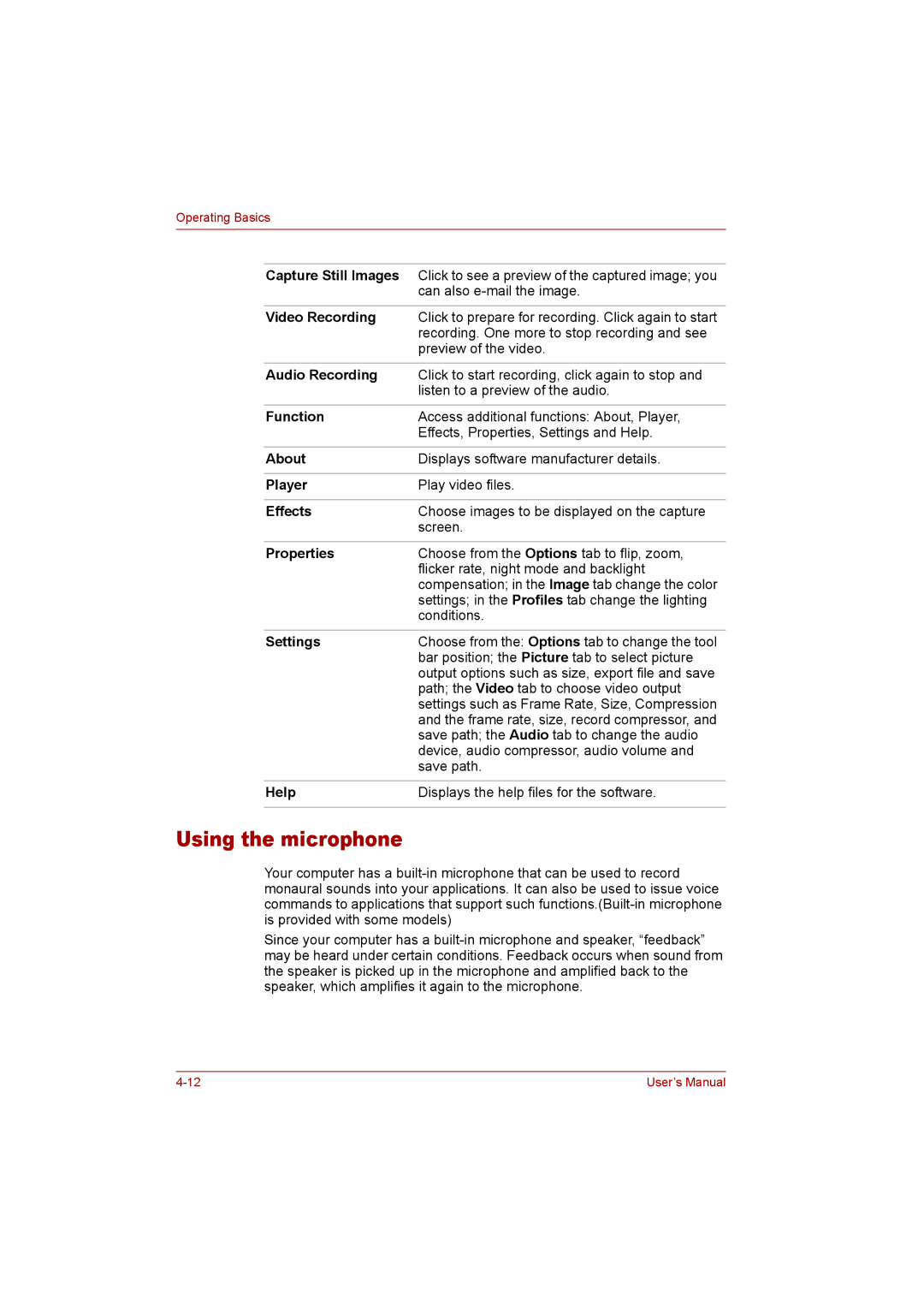
Operating Basics
Capture Still Images | Click to see a preview of the captured image; you |
| can also |
|
|
Video Recording | Click to prepare for recording. Click again to start |
| recording. One more to stop recording and see |
| preview of the video. |
|
|
Audio Recording | Click to start recording, click again to stop and |
| listen to a preview of the audio. |
|
|
Function | Access additional functions: About, Player, |
| Effects, Properties, Settings and Help. |
|
|
About | Displays software manufacturer details. |
|
|
Player | Play video files. |
|
|
Effects | Choose images to be displayed on the capture |
| screen. |
|
|
Properties | Choose from the Options tab to flip, zoom, |
| flicker rate, night mode and backlight |
| compensation; in the Image tab change the color |
| settings; in the Profiles tab change the lighting |
| conditions. |
|
|
Settings | Choose from the: Options tab to change the tool |
| bar position; the Picture tab to select picture |
| output options such as size, export file and save |
| path; the Video tab to choose video output |
| settings such as Frame Rate, Size, Compression |
| and the frame rate, size, record compressor, and |
| save path; the Audio tab to change the audio |
| device, audio compressor, audio volume and |
| save path. |
|
|
Help | Displays the help files for the software. |
|
|
Using the microphone
Your computer has a
Since your computer has a
User’s Manual |
